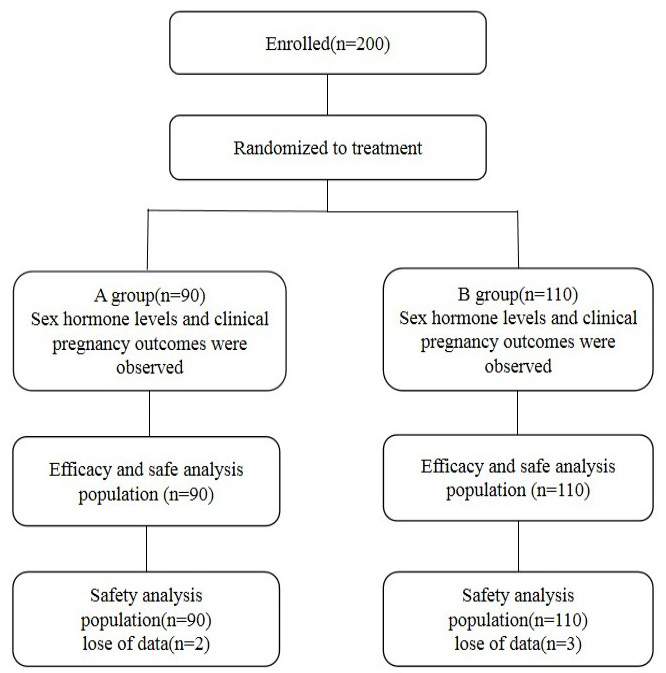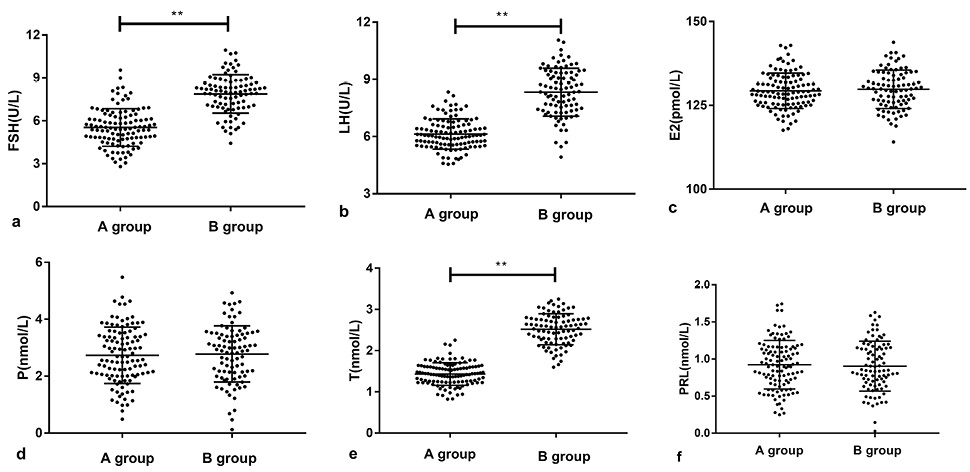Efficacy of Anti-Müllerian Hormone in Predicting the Levels of Sex Hormones and Pregnancy Outcomes in Patients with Polycystic Ovary Syndrome Undergoing IVF-ET
Efficacy of Anti-Müllerian Hormone in Predicting the Levels of Sex Hormones and Pregnancy Outcomes in Patients with Polycystic Ovary Syndrome Undergoing IVF-ET
Jiacheng Du and Yuping Cao*
A combined diagram of the process.
Comparison of sex hormone levels of patients in two groups. a is follicle-stimulating hormone (FSH); b is luteinizing hormone (LH); c is estradiol (E2); d is progesterone (P); e is testosterone (T); f is prolactin (PRL); ** means P<0.001.
Comparison of pregnancy outcomes of patients between the two groups. a is Fertilization rate; b is Cleavage rate; c is Implantation rate; d is High quality embryo rate; e is Biochemical pregnancy rate; f is Clinical pregnancy rate; ** means P<0.001.
Comparison of Early abortion rate and pregnancy complications of patients in the two groups. a is Early abortion rate; b is Pregnancy-induced hypertension; c Gestational diabetes mellitus; **means P<0.001.














